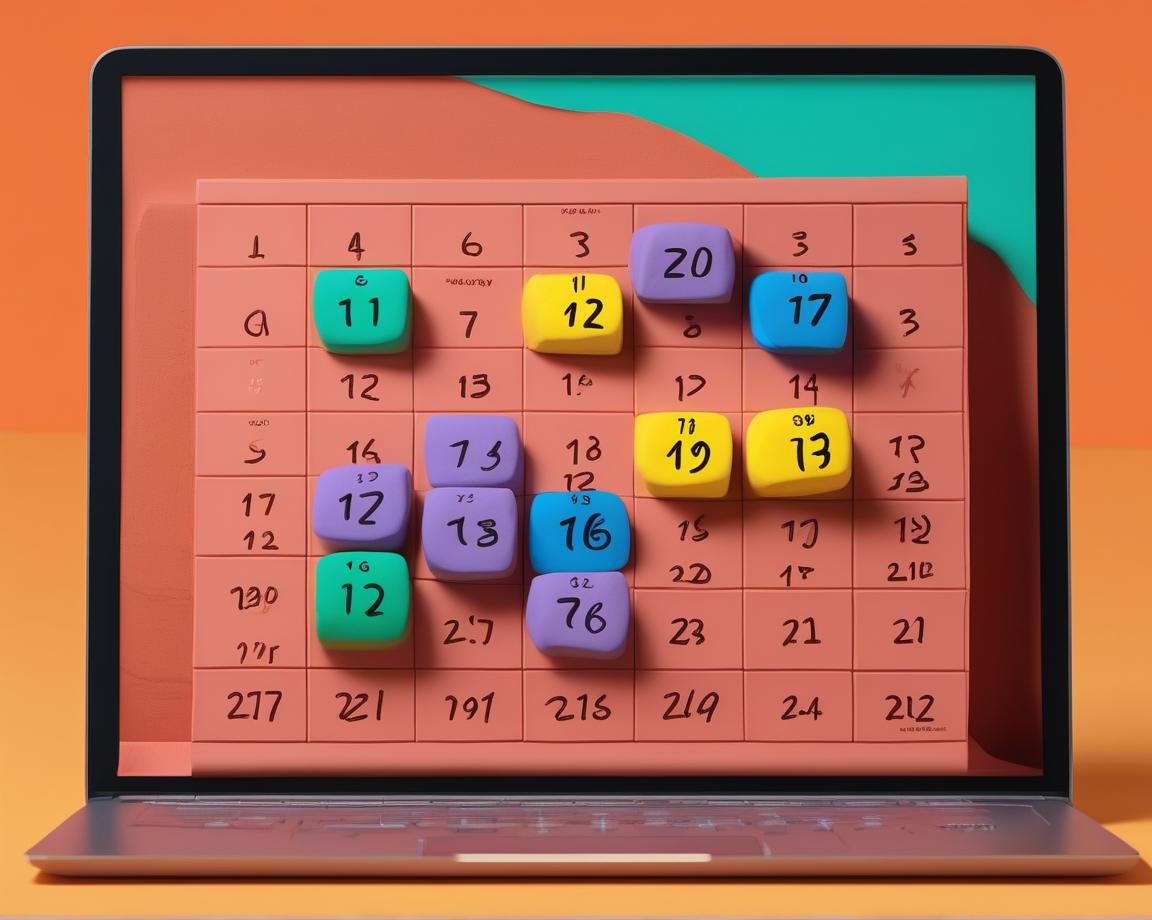Clay is a company undergoing one of those rare moments that startup teams dream of: we’ve 10x’d YoY and have tens of thousands of users, thousands of paying customers including established companies like Verkada, Anthropic and Intercom, and hundreds of brand advocates.
I joined Clay as head of growth marketing earlier this year because I understood the problem we solve on a visceral level. One of my first jobs was running outbound campaigns for 10+ clients at a growth marketing agency called BAMF Media. I spent 2-3 days a week manually building prospecting lists, enriching data, and writing messages.
Seven years later, I found Clay: a product that massively uplevels data enrichment workflows and uses that to automate personalized outreach. Clay could have saved months of my life by automating my entire manual outbound workflow.
Clay has both the traction and the wow factor you hope for as a growth marketer whose core job is to drive new customers and revenue. When I joined as head of growth marketing this year, my job was clear: figure out a strategy to launch us into hockey stick growth.
Before becoming head of growth marketing at Clay, I was the director of growth marketing at Webflow. In my nearly five years there, the company grew 20x and raised more than $300M in funding. I learned firsthand that for a company to experience flywheel growth, you need a growth strategy rooted in understanding your business, product, and audience.
Developing Clay’s growth marketing strategy is an ongoing process that has taken hundreds of hours of thinking. In this post, I’m going to walk you through how I assessed our early strategic bets at Clay.
Put growth in the context of four key components of your business
To determine our core growth bets, I started with a framework sometimes referred to as The Four Fits, or the Market/Product/Channel/Model Fit Framework. It was designed by Brian Balfour, the founder of Reforge.
This framework asks you to think way beyond just product-market fit. Instead, it encourages you to make sure the four key components of the business—your product, market, channels, and monetization model—fit together at all times.
These each need to be aligned as your company expands, your target market evolves, and your product offerings change.

Here are the parts of the framework:
Model-channel fit: Your business model enables and disables different acquisition channels. If your business model involves selling a direct-to-consumer product at a high price point, say $1000, Google Ads is not going to be the best channel for you to use.
Product-channel fit: Your product needs to fit the characteristics of your ideal acquisition channels.
Model-market fit: The number of customers in your market influences your business model. If you want to build a centi-million dollar business and your market only has a thousand customers, your business model must rely on huge ($100k+) enterprise deals.
And, of course, product-market fit: You want to be in a good market with a product that can effectively solve the real pain points of that market.
As you keep these four growth factors in mind, you can think about how to solve your team’s current problems.
The five questions we used to assess Clay’s growth bets
Clay is a growing, but still relatively small, company. We have signs of product-market fit: we’ve organically grown 10x YoY, with thousands of paying customers, tens of thousands of users, and tons of brand advocates.
For the foreseeable future, our goal is to increase self-serve user acquisition. That’s where our growth marketing strategy comes in. To determine how to reach our goal, I turned to four key questions inspired by the framework above.
- What’s our business model?
- Based on our business model, what are our ideal user acquisition channels? (Model-channel fit)
- Based on our product’s characteristics, what are our ideal user channels? (Product-channel fit)
- What’s our current market, and does it fit our business model? (Model-market fit)
Finally—based on the answers above—I dug into what was working about the product’s growth today and thought about how to double down on that. Let’s take a look at how we set out to answer each question.
1. What’s our business model?
Self-serve product-led growth with free trials
Clay’s primary way of making money is a self-serve product-led-growth motion. We send users through a 2-week free trial, where they have access to Pro-level features like unlimited users, CRM integrations, high-usage thresholds, and more.
This is also known as a reverse trial motion: when people gain exposure to the product’s full capability, they are very likely to become customers. Even if they don’t convert, our free trial users often become brand advocates in some meaningful capacity.
Credit-based pricing
After the trial, we convert them to usage and features-based credit tiers. Customers can choose between one of four non-enterprise plans. These plans are differentiated by features, like most tiered pricing plans, but Clay also employs a usage-based credit system.
This is a unique aspect of our product and speaks directly to our value proposition: pay for what you need, not more. Since Clay grants users access to 75+ data providers that users would otherwise have to pay for on their own, Clay’s credit system enables users to have access to those providers directly, combine them to maximize data quality, and only pay for what they need via Clay credits.

Accessible price point
Clay’s pricing ranges from $0-800/month, with the first paid tier at $149/month, which is thoughtfully designed to fit within the budget of small and mid-sized businesses. It’s no secret that large data providers tend to have serious barriers to conversion because they don’t have a self-serve motion and their pricing is not transparently publicized on their websites.
Low-friction adoption tactic
The self-serve motion makes Clay easy to join; new users don’t even have to put in a credit card. The reverse free trial tactic offers users a complete picture of the value of the product from the outset, so there’s no mystery about what the product can be used for. Once people have an opportunity to try it out, they’re able to choose from five usage-based tiers based on what they actually need. Given how powerful the tool is and how many use cases it has, there is a learning curve. All that is to say: Clay is a low-to-medium friction product with a high return on investment.

2. Based on our business model, what are our ideal user acquisition channels?
The context above about our business model and unit economics informed which acquisition channels to choose.
Since our business model relies on low-friction, self-serve 14-day free trials, it’s important to leverage acquisition channels with a high volume of users whom we can encourage to sign up to try Clay.
The best free channels for fostering that behavior are social media and search engine optimization (SEO). We can also acquire new users via paid channels including search and paid social ads.
3. Based on our product’s characteristics, what are our ideal user channels?
Looking at our product also confirms that social media and SEO are ideal acquisition channels.
Clay is an extremely flexible product. Users can start from scratch and build workflows that were previously only accessible to the most sophisticated go-to-market teams in the world. Our product makes data normalization, waterfall, AI enrichment, database and CRM syncing, and outbound automation available for everyone—often saving people weeks of manual labor.
Building these workflows from scratch sparks a sense of pride and ownership. This is similar to how someone might feel after designing a beautiful site in Webflow or an impressive app in Airtable. And people are compelled to share the work they’re proud of.
This pride in ownership makes Clay a good fit for social channels, especially LinkedIn. People often want to position themselves as experts and use that expertise to amplify their own brands and service offerings.

Our product also offers a wealth of desirable information points about different companies. That fits well with our current programmatic SEO strategy, where we can offer free tools and information to the public about key companies.
4. What’s our current market, and does it fit our business model?
We have two key market segments using our products.
- The first is freelancers and marketing agencies whose offerings include outbound marketing campaigns. They use Clay to build successful outbound motions for their clients. Since our tool enables them to build campaigns faster, they’re able to take on more clients or differentiate their offerings because they have more bandwidth.
- The second is in-house growth teams with strong sales-led motions. Clay is far and away the best solution for data enrichment in the market. In-house teams are able to use Clay as a way to power their GTM outbound motions in increasingly robust ways.
This is a great fit for our business model, which relies on self-serve PLG. Freelancers and agencies can onboard and find value quickly. When they work with in-house growth teams, they expose and evangelize the value of Clay.
How is Clay growing today?
The questions above helped us align on social media and SEO as core channels for our business model, product, and market.
To understand how best to leverage these channels, we looked at our current growth drivers: word of mouth, user-generated content, and agencies/service providers introducing in-house teams to Clay.
Word-of-Mouth
People love Clay, which is great for us! Word-of-mouth is our primary growth driver. Customers experience the power of the product; they create their own tables and use it to improve their outbound motions, and then at some point they recommend it to others.
We can depict it as a growth loop—also popularized by Brian Balfour and Reforge—with four steps.

- Sign up. First, users visit the site and sign up for a free account. The product-led growth, self-serve motion has been enormously successful, because of step two.
- Experience product value. Once users are in the product, they can immediately appreciate its value, because it enables them to create personalized outbound campaigns at scale in a fraction of the time.
- Socialize to others: These new users continue to use the product, becoming relative experts. They’re so excited about the output that they tell their friends.
- Gain recognition. When users talk about Clay, it stands to benefit us and the customer who spread the word. Once people socialize that they have successfully created successful, accurate outbound marketing campaigns in a fraction of the time it used to take, they are rightly perceived as innovators in the rapidly evolving go-to-market space.
As users move through the word-of-mouth growth loop, the cycle begins again.
User-Generated Content
User-generated content is the second major growth driver for Clay. It bears a lot of resemblance to the word-of-mouth growth loop save for one key difference—content creation.

1 & 2. Sign up and Experience product value. Steps one and two are the same. Users sign
up for a free trial and experience the value of the product by using it.
3. Create content. Now, while users in the word-of-mouth growth driver are telling
others about the value of the product in a variety of ways across a number of channels, these users are sharing outputs they’ve created using Clay.
4. Gain recognition. Over time, users who share their own content become recognized
as expert innovators in outbound marketing.
As users move through the user-generated content loop, the cycle begins again. New people see the exciting content a user created, then they join Clay themselves and have the potential to move through the user-generated content loop with an opportunity to be recognized in their own right.
Service providers introduce Clay to in-house teams
The third key driver of growth at Clay is our two previously mentioned core market segments: service providers and in-house teams. These teams use Clay to demonstrate outsize impact within a short time frame, which is of course key to their value proposition.
A double growth loop begins when service providers demonstrate the power of Clay by fulfilling their mandate for larger organizations. In-house teams from those organizations experience the power of the product. They become experts themselves and eventually use the tool at their companies, at new companies, or as freelancers and advisors themselves.
A visualization of this is essentially a double growth loop: service providers introduce in-house teams to the tool, which sparks a cycle of new service providers showing new teams to the power of Clay.

Building a sustainable growth strategy based on what’s unique about our business, product, and audience
When it was time to shape what our growth bets should be and what they should look like, we wanted to incorporate everything we’ve learned about how we’re currently growing and making money.
TLDR: We want to amplify the power of our word-of-mouth, user-generated content, and freelancer/small agencies bringing Clay to in-house companies using social media. We also want to deepen and scale an SEO operation to increase our top-of-funnel free trial user acquisition.
Word-of-mouth and user-generated content featuring Clay
As business owners, service providers invest in building their personal brand to attract new clients. They naturally create content showcasing their varied wins and capabilities.
The user-generated content motion is central to how we grow, plus it aligns well with how service providers behave on social channels. As business owners, they invest in building their personal brand to attract new clients. They naturally create content showcasing their varied wins and capabilities.
As a next step, we’re focused on how we can help these creators do what they’re already doing better—and how Clay can become the center of this content generation motion.
Freelancers and Agencies Using Clay
Freelancers and agencies are at the core of our growth. They are the people driving the community and content generation engine. As a next step, we’re focused on ensuring that they are fully bought-in to the product—and helping them become more and more successful over time.
Clay Can Use Clay To Propel Acquisition Motions
Our product and model is unique in a way that enables us to leverage data to build SEO acquisition motions. We’re now working on building an operation to deepen and scale it.
Summarizing how we assessed our bets
Throughout the piece we ask a number of fundamental questions to fully understand our existing growth model and where we should place big bets.
Those questions are:
- What’s our business model?
- Based on our business model, what are our ideal user acquisition channels? (Model-channel fit)
- Based on our product, what are our ideal user channels? (Product-channel fit)
- What’s our current market, and does it fit our business model? (Model-market fit)
As we begin to actually build out our organic and paid growth marketing strategy, we’ll be constantly thinking about and adjusting our understanding based on The Four Fits Framework.
We’ll be thinking about new markets, as enterprise customers join and make unique demands on the product. We’ll also track how our monetization model improves, and whether or not our growth strategy continues to fit as it becomes increasingly sophisticated.
To follow our growth journey and learn how we choose to answer these important growth questions, sign up for the newsletter.
Clay is a company undergoing one of those rare moments that startup teams dream of: we’ve 10x’d YoY and have tens of thousands of users, thousands of paying customers including established companies like Verkada, Anthropic and Intercom, and hundreds of brand advocates.
I joined Clay as head of growth marketing earlier this year because I understood the problem we solve on a visceral level. One of my first jobs was running outbound campaigns for 10+ clients at a growth marketing agency called BAMF Media. I spent 2-3 days a week manually building prospecting lists, enriching data, and writing messages.
Seven years later, I found Clay: a product that massively uplevels data enrichment workflows and uses that to automate personalized outreach. Clay could have saved months of my life by automating my entire manual outbound workflow.
Clay has both the traction and the wow factor you hope for as a growth marketer whose core job is to drive new customers and revenue. When I joined as head of growth marketing this year, my job was clear: figure out a strategy to launch us into hockey stick growth.
Before becoming head of growth marketing at Clay, I was the director of growth marketing at Webflow. In my nearly five years there, the company grew 20x and raised more than $300M in funding. I learned firsthand that for a company to experience flywheel growth, you need a growth strategy rooted in understanding your business, product, and audience.
Developing Clay’s growth marketing strategy is an ongoing process that has taken hundreds of hours of thinking. In this post, I’m going to walk you through how I assessed our early strategic bets at Clay.
Put growth in the context of four key components of your business
To determine our core growth bets, I started with a framework sometimes referred to as The Four Fits, or the Market/Product/Channel/Model Fit Framework. It was designed by Brian Balfour, the founder of Reforge.
This framework asks you to think way beyond just product-market fit. Instead, it encourages you to make sure the four key components of the business—your product, market, channels, and monetization model—fit together at all times.
These each need to be aligned as your company expands, your target market evolves, and your product offerings change.

Here are the parts of the framework:
Model-channel fit: Your business model enables and disables different acquisition channels. If your business model involves selling a direct-to-consumer product at a high price point, say $1000, Google Ads is not going to be the best channel for you to use.
Product-channel fit: Your product needs to fit the characteristics of your ideal acquisition channels.
Model-market fit: The number of customers in your market influences your business model. If you want to build a centi-million dollar business and your market only has a thousand customers, your business model must rely on huge ($100k+) enterprise deals.
And, of course, product-market fit: You want to be in a good market with a product that can effectively solve the real pain points of that market.
As you keep these four growth factors in mind, you can think about how to solve your team’s current problems.
The five questions we used to assess Clay’s growth bets
Clay is a growing, but still relatively small, company. We have signs of product-market fit: we’ve organically grown 10x YoY, with thousands of paying customers, tens of thousands of users, and tons of brand advocates.
For the foreseeable future, our goal is to increase self-serve user acquisition. That’s where our growth marketing strategy comes in. To determine how to reach our goal, I turned to four key questions inspired by the framework above.
- What’s our business model?
- Based on our business model, what are our ideal user acquisition channels? (Model-channel fit)
- Based on our product’s characteristics, what are our ideal user channels? (Product-channel fit)
- What’s our current market, and does it fit our business model? (Model-market fit)
Finally—based on the answers above—I dug into what was working about the product’s growth today and thought about how to double down on that. Let’s take a look at how we set out to answer each question.
1. What’s our business model?
Self-serve product-led growth with free trials
Clay’s primary way of making money is a self-serve product-led-growth motion. We send users through a 2-week free trial, where they have access to Pro-level features like unlimited users, CRM integrations, high-usage thresholds, and more.
This is also known as a reverse trial motion: when people gain exposure to the product’s full capability, they are very likely to become customers. Even if they don’t convert, our free trial users often become brand advocates in some meaningful capacity.
Credit-based pricing
After the trial, we convert them to usage and features-based credit tiers. Customers can choose between one of four non-enterprise plans. These plans are differentiated by features, like most tiered pricing plans, but Clay also employs a usage-based credit system.
This is a unique aspect of our product and speaks directly to our value proposition: pay for what you need, not more. Since Clay grants users access to 75+ data providers that users would otherwise have to pay for on their own, Clay’s credit system enables users to have access to those providers directly, combine them to maximize data quality, and only pay for what they need via Clay credits.

Accessible price point
Clay’s pricing ranges from $0-800/month, with the first paid tier at $149/month, which is thoughtfully designed to fit within the budget of small and mid-sized businesses. It’s no secret that large data providers tend to have serious barriers to conversion because they don’t have a self-serve motion and their pricing is not transparently publicized on their websites.
Low-friction adoption tactic
The self-serve motion makes Clay easy to join; new users don’t even have to put in a credit card. The reverse free trial tactic offers users a complete picture of the value of the product from the outset, so there’s no mystery about what the product can be used for. Once people have an opportunity to try it out, they’re able to choose from five usage-based tiers based on what they actually need. Given how powerful the tool is and how many use cases it has, there is a learning curve. All that is to say: Clay is a low-to-medium friction product with a high return on investment.

2. Based on our business model, what are our ideal user acquisition channels?
The context above about our business model and unit economics informed which acquisition channels to choose.
Since our business model relies on low-friction, self-serve 14-day free trials, it’s important to leverage acquisition channels with a high volume of users whom we can encourage to sign up to try Clay.
The best free channels for fostering that behavior are social media and search engine optimization (SEO). We can also acquire new users via paid channels including search and paid social ads.
3. Based on our product’s characteristics, what are our ideal user channels?
Looking at our product also confirms that social media and SEO are ideal acquisition channels.
Clay is an extremely flexible product. Users can start from scratch and build workflows that were previously only accessible to the most sophisticated go-to-market teams in the world. Our product makes data normalization, waterfall, AI enrichment, database and CRM syncing, and outbound automation available for everyone—often saving people weeks of manual labor.
Building these workflows from scratch sparks a sense of pride and ownership. This is similar to how someone might feel after designing a beautiful site in Webflow or an impressive app in Airtable. And people are compelled to share the work they’re proud of.
This pride in ownership makes Clay a good fit for social channels, especially LinkedIn. People often want to position themselves as experts and use that expertise to amplify their own brands and service offerings.

Our product also offers a wealth of desirable information points about different companies. That fits well with our current programmatic SEO strategy, where we can offer free tools and information to the public about key companies.
4. What’s our current market, and does it fit our business model?
We have two key market segments using our products.
- The first is freelancers and marketing agencies whose offerings include outbound marketing campaigns. They use Clay to build successful outbound motions for their clients. Since our tool enables them to build campaigns faster, they’re able to take on more clients or differentiate their offerings because they have more bandwidth.
- The second is in-house growth teams with strong sales-led motions. Clay is far and away the best solution for data enrichment in the market. In-house teams are able to use Clay as a way to power their GTM outbound motions in increasingly robust ways.
This is a great fit for our business model, which relies on self-serve PLG. Freelancers and agencies can onboard and find value quickly. When they work with in-house growth teams, they expose and evangelize the value of Clay.
How is Clay growing today?
The questions above helped us align on social media and SEO as core channels for our business model, product, and market.
To understand how best to leverage these channels, we looked at our current growth drivers: word of mouth, user-generated content, and agencies/service providers introducing in-house teams to Clay.
Word-of-Mouth
People love Clay, which is great for us! Word-of-mouth is our primary growth driver. Customers experience the power of the product; they create their own tables and use it to improve their outbound motions, and then at some point they recommend it to others.
We can depict it as a growth loop—also popularized by Brian Balfour and Reforge—with four steps.

- Sign up. First, users visit the site and sign up for a free account. The product-led growth, self-serve motion has been enormously successful, because of step two.
- Experience product value. Once users are in the product, they can immediately appreciate its value, because it enables them to create personalized outbound campaigns at scale in a fraction of the time.
- Socialize to others: These new users continue to use the product, becoming relative experts. They’re so excited about the output that they tell their friends.
- Gain recognition. When users talk about Clay, it stands to benefit us and the customer who spread the word. Once people socialize that they have successfully created successful, accurate outbound marketing campaigns in a fraction of the time it used to take, they are rightly perceived as innovators in the rapidly evolving go-to-market space.
As users move through the word-of-mouth growth loop, the cycle begins again.
User-Generated Content
User-generated content is the second major growth driver for Clay. It bears a lot of resemblance to the word-of-mouth growth loop save for one key difference—content creation.

1 & 2. Sign up and Experience product value. Steps one and two are the same. Users sign
up for a free trial and experience the value of the product by using it.
3. Create content. Now, while users in the word-of-mouth growth driver are telling
others about the value of the product in a variety of ways across a number of channels, these users are sharing outputs they’ve created using Clay.
4. Gain recognition. Over time, users who share their own content become recognized
as expert innovators in outbound marketing.
As users move through the user-generated content loop, the cycle begins again. New people see the exciting content a user created, then they join Clay themselves and have the potential to move through the user-generated content loop with an opportunity to be recognized in their own right.
Service providers introduce Clay to in-house teams
The third key driver of growth at Clay is our two previously mentioned core market segments: service providers and in-house teams. These teams use Clay to demonstrate outsize impact within a short time frame, which is of course key to their value proposition.
A double growth loop begins when service providers demonstrate the power of Clay by fulfilling their mandate for larger organizations. In-house teams from those organizations experience the power of the product. They become experts themselves and eventually use the tool at their companies, at new companies, or as freelancers and advisors themselves.
A visualization of this is essentially a double growth loop: service providers introduce in-house teams to the tool, which sparks a cycle of new service providers showing new teams to the power of Clay.

Building a sustainable growth strategy based on what’s unique about our business, product, and audience
When it was time to shape what our growth bets should be and what they should look like, we wanted to incorporate everything we’ve learned about how we’re currently growing and making money.
TLDR: We want to amplify the power of our word-of-mouth, user-generated content, and freelancer/small agencies bringing Clay to in-house companies using social media. We also want to deepen and scale an SEO operation to increase our top-of-funnel free trial user acquisition.
Word-of-mouth and user-generated content featuring Clay
As business owners, service providers invest in building their personal brand to attract new clients. They naturally create content showcasing their varied wins and capabilities.
The user-generated content motion is central to how we grow, plus it aligns well with how service providers behave on social channels. As business owners, they invest in building their personal brand to attract new clients. They naturally create content showcasing their varied wins and capabilities.
As a next step, we’re focused on how we can help these creators do what they’re already doing better—and how Clay can become the center of this content generation motion.
Freelancers and Agencies Using Clay
Freelancers and agencies are at the core of our growth. They are the people driving the community and content generation engine. As a next step, we’re focused on ensuring that they are fully bought-in to the product—and helping them become more and more successful over time.
Clay Can Use Clay To Propel Acquisition Motions
Our product and model is unique in a way that enables us to leverage data to build SEO acquisition motions. We’re now working on building an operation to deepen and scale it.
Summarizing how we assessed our bets
Throughout the piece we ask a number of fundamental questions to fully understand our existing growth model and where we should place big bets.
Those questions are:
- What’s our business model?
- Based on our business model, what are our ideal user acquisition channels? (Model-channel fit)
- Based on our product, what are our ideal user channels? (Product-channel fit)
- What’s our current market, and does it fit our business model? (Model-market fit)
As we begin to actually build out our organic and paid growth marketing strategy, we’ll be constantly thinking about and adjusting our understanding based on The Four Fits Framework.
We’ll be thinking about new markets, as enterprise customers join and make unique demands on the product. We’ll also track how our monetization model improves, and whether or not our growth strategy continues to fit as it becomes increasingly sophisticated.
To follow our growth journey and learn how we choose to answer these important growth questions, sign up for the newsletter.




























































